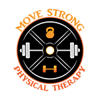The Importance of Recovery After a Workout
Do you find yourself constantly fatigued, or with recurrent aches and pains?
You may not be adequately recovering from your workouts. Exercise is stress, and too much of it can overwhelm the body. Without enough stress however, there is nothing to stimulate growth. The key is applying the right amount (and type) of stress, while allowing the right amount of recovery.
Imagine you are suddenly inspired to run a marathon, but it’s been years since you went jogging. Running a few days a week is a great start. Running 7 days a week will get you injured, unless you are some kind of genetic freak. Too much stress too soon, not enough recovery.
The process looks something like this:

Apply the stress, recover, adaptations will happen. Repeat over time. Some of these adaptations will be specific to the particular exercise you are doing. Sticking with running, examples of these would be:
• Muscle growth in quads, hamstrings, glutes, calves (amongst others)
• Increased ability of these muscles to use oxygen for energy
• Improved efficiency of running mechanics
There will also be body-wide adaptations that will look similar regardless of the form of exercise. If you exercise with a heart rate of 130 bpm for 30 mins, 3x/week for a month, it doesn’t matter if you are running, rowing, or Jazzercising; the following changes will likely happen:
• Heart will pump blood more efficiently
• Increased energy reserves overall
These global changes illustrate how the body responds to stress as a whole. This also means that physical activity will compete for the same resources as other stressors in your life. The heated argument with your family, the looming deadline of that work project, the sleepless nights of early parenting, the 4 adult beverages on Saturday Night; all of these will temporarily decrease your body’s ability to handle the strain that exercise imposes.

Thanks to James Clear for the Image!
Imagine your resources as water in a drink dispensor; stressors drain the water, while recovery will replenish it. When the water level gets too low, you will start to experience declining performance, pain, lack of motivation, fatigue, etc.
Ways to Recovery
Some simple ways to facilitate recovery:
• Prioritize stress management
• Active Recovery (LOW Intensity Cardio)
• Walking/Hiking
• Yoga
• Tai Chi
• Biking
• Sleep more
• Eat well
• Rest
• Warm Up/Cool Down from workouts
I want to emphasize that the active recovery must be at a level low enough that it does not significantly stress your aerobic system. The optimal zone will be different for everybody, but to get a rough idea, take (220 - age) x .6 for the upper limit of what your heart rate should be. I am 35, which gives me a rough upper limit of 111 beats per minute. This can be adjusted depending on how good of shape you are in.
At the start of a program, when motivation is high and you’re feeling like a beast, it may be tempting to sneak in some extra cardio. This is a bad idea. This will result in incomplete recovery from your last workout, while leaving you with less energy for your next planned workout.
The following pictures illustrate this well. The yellow dot represents a stressor such as exercise, while the dip represents a corresponding decrease in our body’s resources.

With proper recovery, athletes come back stronger, and ready for the next workout.

In Closing: Why Recovery is Important for Athletes
With incomplete recovery, the stressor is applied before the body has a chance to adapt. The end result is athletes are getting worse over time rather than better.
You are up against strong cultural messages of “no days off”, and “no pain no gain”. Realize that these are at odds with everything that science tells us about optimal functioning of the mind and the body. Train smart, be good to yourself, keep your bucket full!
When we work with clients of ours at Move Strong Physical Therapy, located inside of Cressey Sports Performance in Hudson, MA, we are consistently discussing the importance of recovery for athletes and active adults.
If you are dealing with an injury, contact our physical therapy clinic in Hudson, Massachusetts to take that first step to get back to doing the things you love to do.



